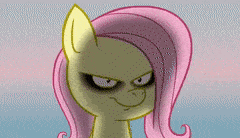30462904
Plugs, Sockets, Receptacles, and Terminals (Mod.3 Sect.2 Part 1) 1 of 2
Descripción
Diapositivas por That Yeti Dog Person, actualizado hace más de 1 año
Más
Menos

|
Creado por That Yeti Dog Person
hace más de 3 años
|
|
Resumen del Recurso
Diapositiva 1
Types of Terminals
Terminals
Pie de foto: : hm
Any plug would be male and any socket would be female according to the definitions given for those connectors. Terminal is a name often given to describe a tie point, or termination, of a wire run. Figure 2 shows some examples of terminals.
Diapositiva 2
Pie de foto: : Here are some examples of tube sockets. The octal type is also used for some types of relays.
Tube and Relay Sockets
Sockets were popular because tubes often had to be replaced in electronic equipment. Examples of seven- and eight-pin tube sockets are shown in Figure 3. Note that a nine-pin tube socket is configured similarly to the seven-pin socket shown.
Tubes were pushed into the sockets to make contact with the circuit. To replace a tube you simply pulled it out of the socket and pushed the replacement into the empty socket. There was a special tube socket called a loctal socket that was designed to hold the tube in the socket when the electronic system was exposed to vibration. To remove a tube from a loctal socket, it was necessary to apply a force on the side of the tube. The replacement tube would snap into place when inserted into the socket.
To prevent an accidental cross-connection, the tube sockets were designed so the tube could be inserted only one way. The space and the key in the examples of Figure 3 show how the sockets were aligned.
Diapositiva 3
Transistor and I.C. Sockets
Pie de foto: : There are many types of transistor and integrated-circuit sockets. They’re used in prototype assemblies.
This figure shows some examples of transistor sockets. They’re used in prototypes where it’s sometimes necessary to make transistor replacements. However, transistor sockets are seldom used in mass-production electronic equipment. Eliminating the socket reduces the cost of the system because transistors can be inserted onto the board and soldered with automatic equipment. This greatly reduces the cost of an electronic assembly. Figure 4 also shows sockets for integrated circuits. As with transistor sockets, they’re used primarily for prototypes.
Diapositiva 4
Connectors and Terminals
Pie de foto: : Some examples of terminals that require solder are shown here. The terminals with their mechanical wiring connections are shown in preparation for soldering.
Wires or conductors can be terminated by two kinds of connectors and terminals: soldered or solderless. Some examples of soldered connectors and terminals are shown in this figure. Note that there’s a difference of opinion among technicians as to whether a mechanical connection is needed in order to solder a wire to a terminal. Naturally, you should follow the procedure set forth by the company where you work, but a combined mechanical-solder joint can better withstand the physical abuse inflicted on some portable equipment.
Diapositiva 5
Current Flow in Wires
Pie de foto: : Here are two ways of illustrating current flow: (A) electron flow, and (B) conventional current flow, also called hole flow.
The idea of electric current being a flow of electrons is very convenient for explaining circuit behavior. You’ll encounter it throughout your studies. Positive “holes” and negative electrons are called charge carriers. The flow of charge carriers is called current. The flow of charge carriers is a very important concept in the study of transistors, diodes, and other semiconductors. Electron current flow is from a negative potential to a positive potential. It’s illustrated in Figure 9A. Hole flow is from a positive potential to a negative potential. It’s also called conventional current flow.
Diapositiva 6
The Strain Gauge (1)
Pie de foto: : A yardstick, clamped to a table, demonstrates the meanings of stress and strain. When the yardstick is bent by an applied force, the top of the stick is “stretched”, otherwise referred to as being put in tension. At the same time, the bottom side of the yardstick is put in compression. The neutral axis is the imaginary line where the yardstick’s material is neither stretched nor compressed.
Let’s take a moment to answer the following questions. How do you increase the length of a piece of wire? And, how do you decrease the cross-sectional area of a piece of wire? The use of a strain gauge will serve as an example. A strain gauge is a device that’s used to measure the amount of deformation of a body when it’s stressed. When you clamp a yardstick to a table, as shown in the illustration, and then apply a force, the yardstick will bend.
The amount of force applied and the cross-sectional area of the part being acted on determine the level of stress. The amount of deformation (bending) is a measure of the strain. (You should make it a point to remember the scientific difference between the terms stress and strain. Those terms are sometimes used incorrectly in nonscientific texts.)
Diapositiva 7
The Strain Gauge (2)
Pie de foto: : (A) A strain gage is made by cementing a wire to a flexible card. (B) The strain gage in this illustration is used to measure the deformation of the yardstick.
A strain gauge is a made by using a length of wire cemented to a flexible card. As the name implies, it’s used to measure the amount of deformation of a body. The strain gauge can be cemented to the yardstick as shown in Figure B. When force is applied to the yard stick, it becomes deformed (strained). When that happens the wire is stretched, that is, it’s lengthened. At the same time, its cross-sectional area is decreased (made smaller).
¿Quieres crear tus propias Diapositivas gratis con GoConqr? Más información.
